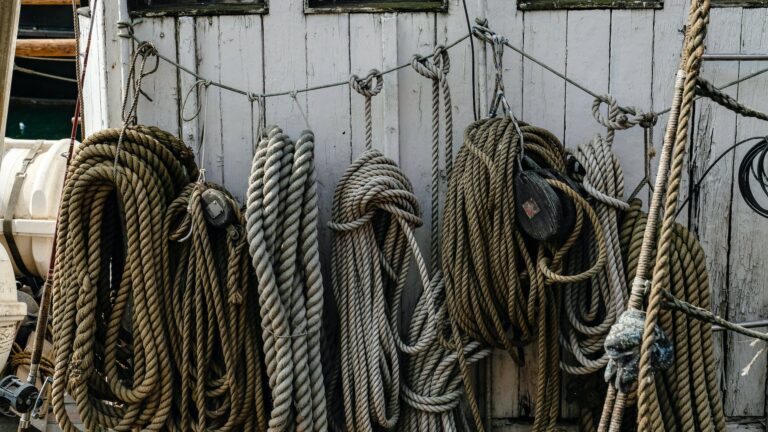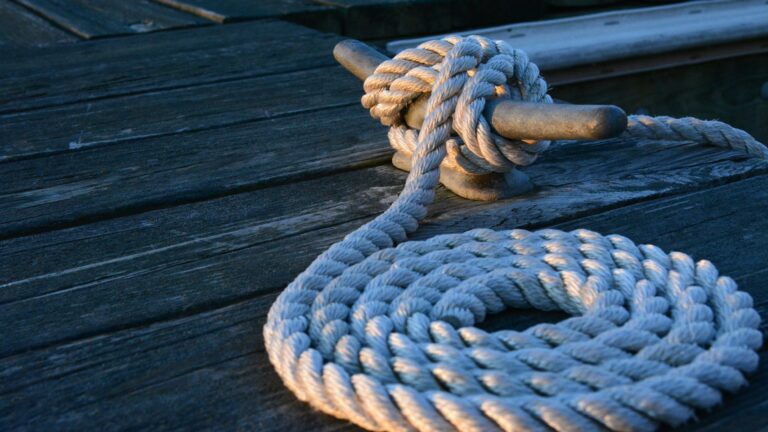What is a downhaul on a sailboat?
Introduction
- Introduction to sailing and downhaul
- What is a downhaul?
- Benefits of the downhaul
- Different types of downhauls
- Downhaul line selection
- Rigging a downhaul
- Operating and adjusting a downhaul
- Taking care of the downhaul line
- Tips for effective use of the downhaul
- Conclusion and summary
- Further resources
Introduction to Sailing and Downhauls
Sailing has been a popular pastime for centuries, with people around the world taking to the open waters to relax, explore, and race against each other. Whether you are an experienced sailor or a complete beginner, understanding the basics of sailing is fundamental to success on the open water. One such fundamental is the downhaul, which is an essential part of rigging a sailboat that applies downward force on a spar or sail in order to set it up properly for optimal performance while sailing. In this article, we will discuss what exactly a downhaul is, its various benefits and applications, different types of downhauls available on the market today, how to properly rig and operate them, as well as how to ensure their longevity with proper maintenance and care.
What is a Downhaul?
A downhaul is essentially a line that runs from either the bow or stern of a sailboat downward towards its mast or spinnaker pole in order to apply downward force on either the mast or sails themselves in order to set them up properly for optimal performance while sailing. The most common type of downhaul found on modern sailboats is attached to either the spinnaker pole or masthead at one end and then runs through a cleat mounted near where it attaches at the other end in order to adjust tension as needed during operation. This system allows for quick and easy adjustment in order to achieve optimal results when sailing in different conditions such as high winds or rough seas when extra tension may be required in order to keep everything in place during more demanding conditions.
Benefits of Using a Downhaul
Downhuals are an essential part of rigging any sailboat as they provide several key benefits that help ensure optimal performance while sailing:
-
Increased stability: By applying downward force along either your mast or sails, you can help ensure that everything stays securely in place even under more demanding conditions such as high winds or rough seas which can otherwise cause your setup to become unstable if not properly secured with extra tension provided by your downhaul line(s).
-
Greater control: With added tension along your mast or sails from your downhaul lines you can also gain greater control over how your boat responds when you are sailing by adjusting your lines tension accordingly depending on what kind of performance you need in different conditions such as heavy wind gusts or choppy waves which will both require different levels of tension depending on how much stability you need at that moment for optimal performance without sacrificing maneuverability or speed due to too much rigidity from too much tension applied on your lines .
-
Smoother tacks: By having proper tension along your lines from using your downhuals, you can help ensure that you experience smoother tacks (turning) when transitioning from one direction to another which will help prevent any sudden jerking movements that can sometimes occur if there isn’t enough tension along your lines during tacking maneuvers due to insufficient set up beforehand with proper adjustments made by using one’s own judgement when setting up their rigging before they set out onto open waters with their vessel(s).
Different Types of Downhuals Available on The Market Today
Downhuals vary greatly depending on what kind of vessel they are being used for but generally speaking there are two main types available today; mechanical and manual/pull-down systems which both serve similar purposes but differ slightly based on their operation methods:
-
Mechanical Downhual Systems: This type uses either winch systems with electric motors (most common) or manual winches (less common) for operation which allow for quick and easy adjustments without having to manually pull length off your lines like with manual systems (more on this below). This type requires more setup time but allows for faster adjustment time once everything has been properly rigged beforehand making it ideal for larger vessels where time is often limited due to space constraints and/or weight limitations from extra gear aboard one’s boat(s). Mechanical systems are also typically more expensive than manual ones due their complexity but offer greater control over how much tension is applied along one’s lines due their reliance on motors/mechanical components rather than just human strength alone as seen with manual systems discussed below..
-
Manual/Pull-Down Systems: This type operates by having someone manually pull length off their line(s) while continuously adjusting it until they reach desired amount of tension along their lines before setting off onto open water which makes them ideal for smaller vessels where time often isn’t an issue since they don’t require any complex setup beforehand like mechanical systems do making them cheaper than mechanical ones albeit less efficient when it comes to time saved during setup since there isn’t any motor-powered assistance available like with mechanical systems mentioned above . Manual/pull-down systems also tend not be as precise when it comes controlling exact levels of tension applied along one’s lines due its reliance solely on human strength so some trial-and-error may be necessary in order find desired level before setting off onto open water .







